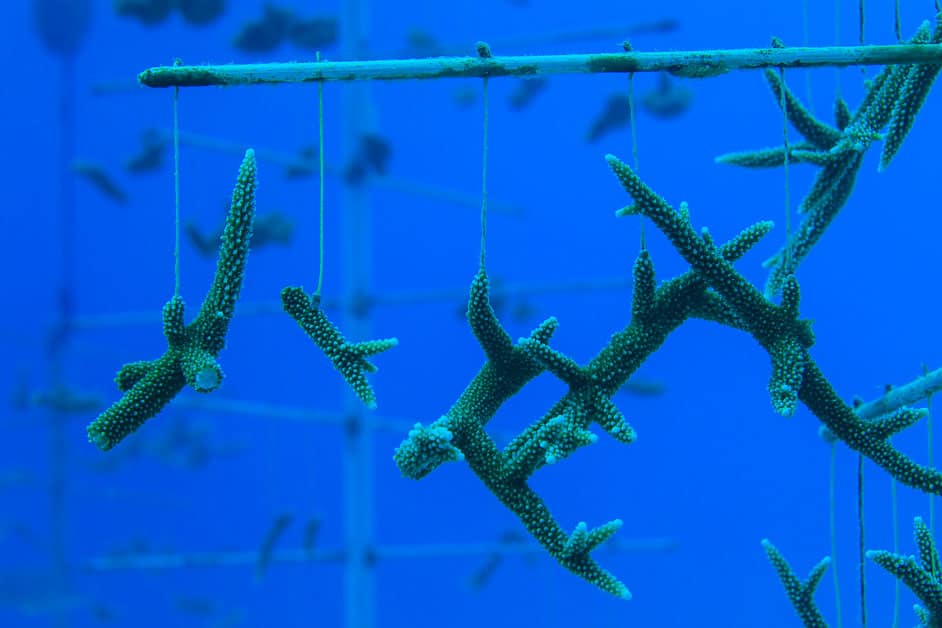Coral reefs around the world are in trouble. They are being damaged by climate change, pollution, and overfishing. As a result, many reefs are dying. This is a major problem because coral reefs are home to a huge variety of plants and animals. They are also a major source of food and income for people who live near them.
Coral farming is a type of aquaculture that is being used to help save coral reefs. In coral farming, coral is grown in underwater nurseries and then transplanted to reefs that are in need of help. This is a promising solution to the problem of dying reefs, but it is not without its challenges.
This blog will explore the potential of coral farming to save our dying reefs. It will also discuss the challenges that need to be overcome if this method is going to be successful.
In this article, we’ll discuss how old do you have to be to scuba dive and the minimum scuba certification age. We’ll also address the physical, health and emotional considerations that all parents should be aware of before allowing their child to dive.
An Introduction to Coral Farming
Using only pliers and my bare hands, I anxiously snipped off a piece of delicate hard coral. I have spent my entire career emphasizing the importance of corals and training divers not to touch or break them, and so could not help but hesitate as I removed the pieces beneath me. Finding comfort in reminding myself that, though counter-intuitive, the simple act of breaking coral apart is the first step towards re-growing coral reefs.
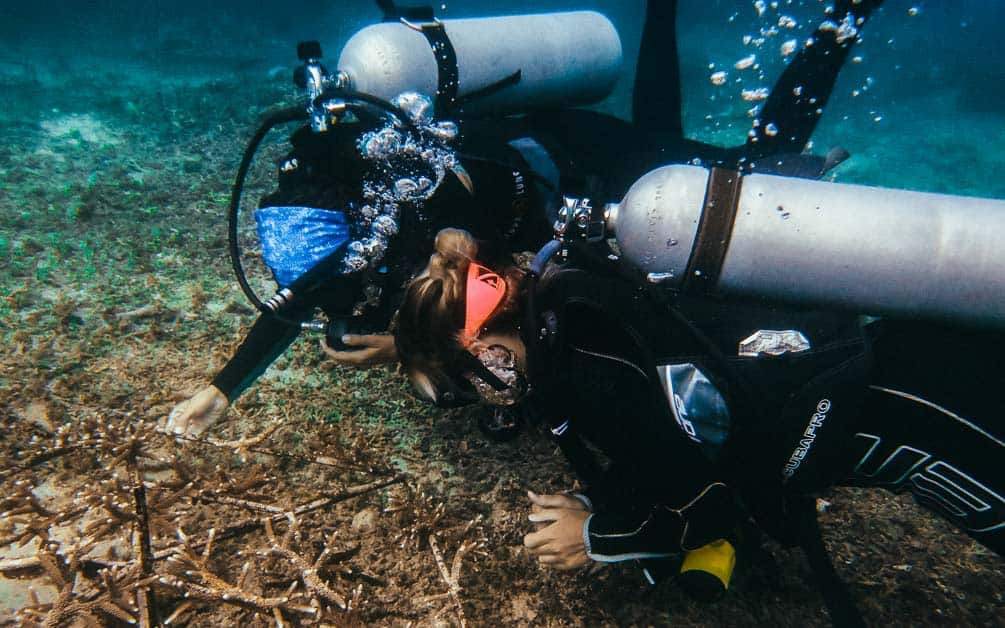
Coral reefs supply homes to thousands of species of animals. They provide food, jobs, shelter from coastal storms, and even pharmaceuticals for billions of people; however, their numbers are dwindling. Despite our best efforts the numerous stressors such as climate change and pollution threaten reef communities worldwide. To help prevent the degradation of these reefs coral farming, also known as coral gardening or coral aquaculture, is being employed.
This practice encourages the growth and reproduction of corals allowing them to recover and replenish. Some coral aquaculture facilities produce corals in laboratories and subsequently transport them to be planted in the wild while other companies participate in coral farming for profit, providing various types of coral for aquarium trade.
What Are Corals?
Corals are colonial animals, closely related to jellyfish and sea anemones. A single coral individual is called a polyp, which slightly resembles a teeny-tiny upside-down jellyfish. As larvae, they attach to a surface then slowly begin to grow and divide. While the bodies of corals are made of soft tissue, many corals known as stony corals, secrete hard skeletons for protection. Hard corals (or stony corals) are also referred to as reef-building corals since they generate the reefs that provide critical habitats for millions of marine organisms.
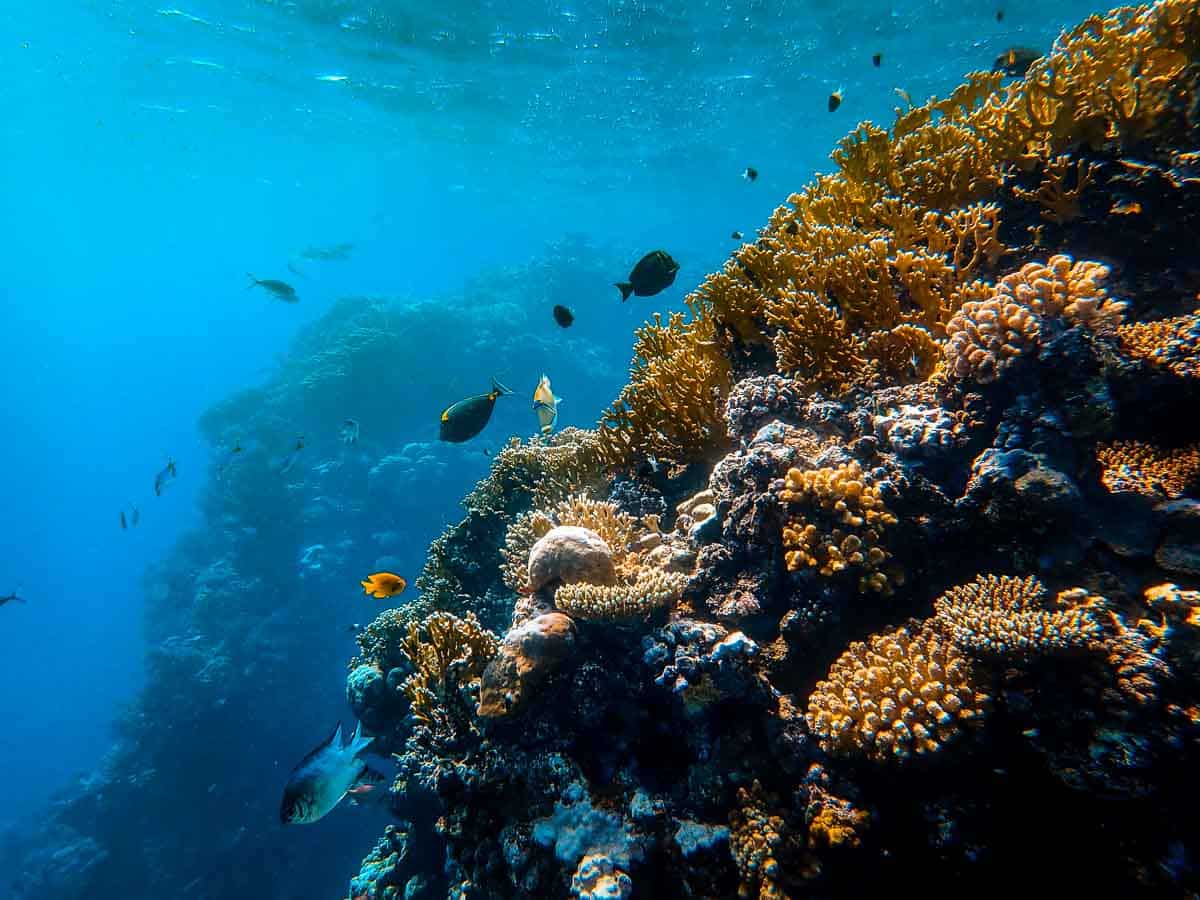
The hard outer body of coral is made of a compound called calcium carbonate – the same material used by other organisms to build strong, protective shells. Coral polyps absorb the calcium and carbonate from the ocean then secrete it from their tissue, albeit at very slow rate. Stony corals grow on average approximately one centimeter per year and other corals’ growth rates can range from 0.3 cm to 10 cm per year depending on the environment and species. On account of their slow growth rate, it can take one coral larva up to 10,000 years to develop into a reef and nearly 30,000,000 years to create larger barrier reefs like the Great Barrier Reef just off Australia’s eastern coast.
While each coral polyp has a mouth and a stomach, 90% of a coral’s energy and nutrients come from the algae embedded in its tissue. Corals share a symbiotic relationship with zooxanthellae, a photosynthetic alga vital to the survival of most stony corals. Along with food and oxygen, zooxanthellae also provide pigmentation and color to the coral tissue. If corals become stressed, they may expel their zooxanthellae, losing their coloration and their food source. Another term to describe this is coral bleaching, which can inadvertently hinder the growth and development of corals, even leading to death if conditions do not improve.

Why Are Coral Reefs Threatened?
Corals are sensitive creatures. They grow slowly, removing calcium and carbonate from seawater to build their intricate skeletons. Furthermore, corals cannot feed themselves, and as previously mentioned approximately 90% of their energy is from the algae embedded in their tissues. Coral reefs are primarily at risk because these two necessities (a hard, protective skeleton and a sustainable food source) can only exist under certain environmental conditions.
Through the combustion of fossil fuels, human activity has significantly altered the marine environment that corals depend upon. Excess carbon dioxide in the atmosphere traps in more heat, warming atmospheric and sea surface temperatures on a global scale. High ocean temperatures result in coral bleaching and although traditionally it is a rare event this has become far too common. Furthermore, when surplus carbon dioxide diffuses into the ocean it reacts to form carbonic acid, which can alter seawater chemistry. This phenomenon, known as ocean acidification, erodes the calcium carbonate skeleton of corals and makes it more difficult for coral polyps to retrieve the carbonate they need from their surrounding environment. As carbon dioxide emissions continue to rise, the frequency and intensity of ocean acidification and coral bleaching increases.
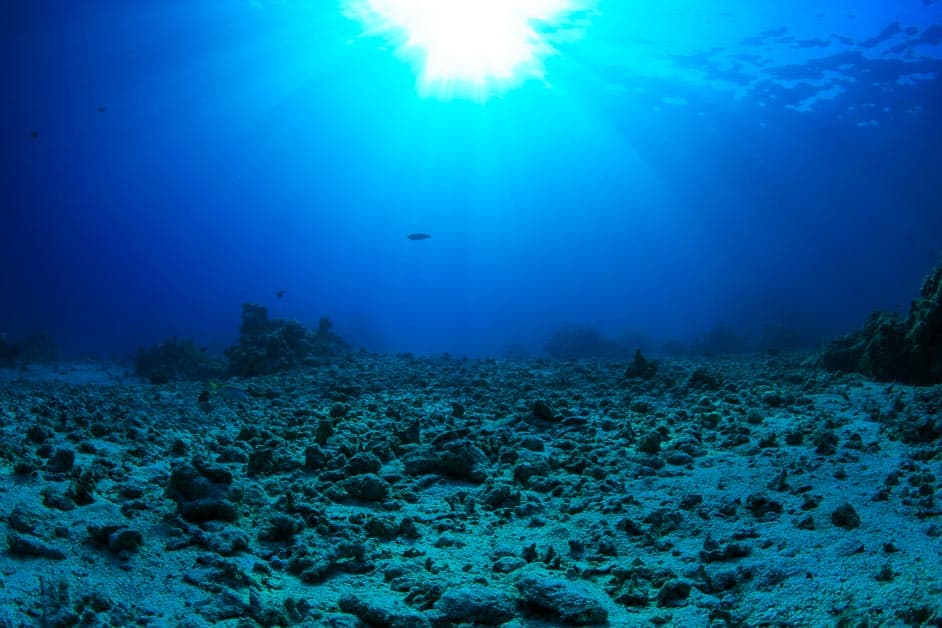
As a consequence of corals being weakened by their rapidly changing environment, they have become more vulnerable to these stressors than previously thought. Introduction of pollutants, damage by illegal or improper fishing methods, increases in sea level, and stronger, more frequent coastal storms all threaten coral reefs. The removal of large predators and algae-eaters has also altered the reef ecosystem commonly creating algae overgrowth. As a result of this, a quarter of all coral reefs have been lost and most scientists have predicted that by 2050, nearly all reefs will be threatened.
How Does Coral Farming Work?
Coral farming works by accelerating the natural growth process of living corals. Like many marine invertebrates, corals have the amazing ability to clone themselves through asexual reproduction. One coral polyp can simply split itself into two genetically identical polyps during a process known as fission. Coral farms harness this natural ability, often accelerating growth by placing corals under ideal conditions within a controlled enclosure.
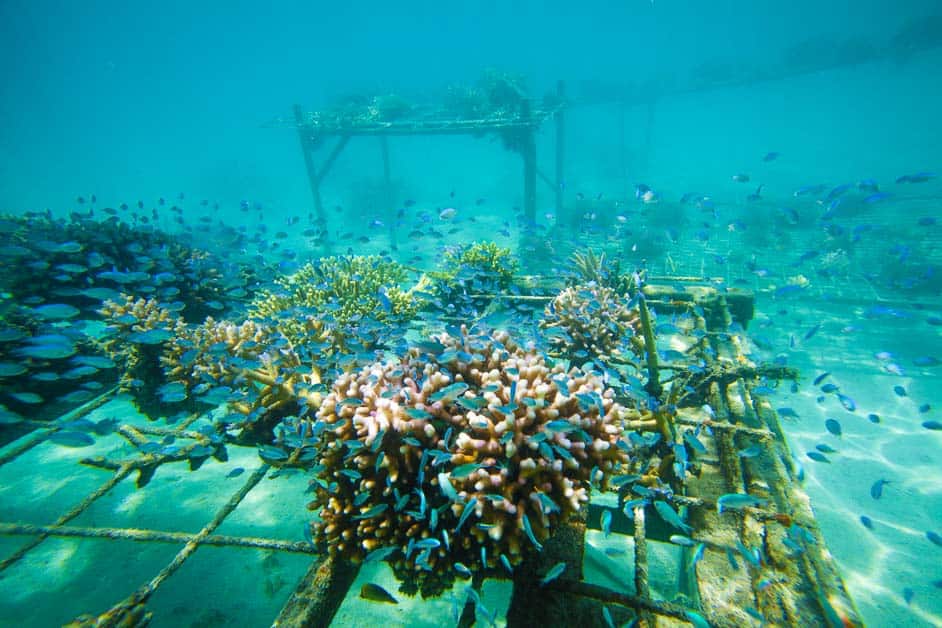
While specific practices vary from garden to garden, most coral farming begins with the grow-out of little fragments of coral that have been collected from larger colonies. Most farmers implement the practice of coral micro fragmentation (the splitting of live coral into many much smaller colonies) which works to increase the coral’s surface area, allowing corals to take up a greater amount of nutrients and in turn, grow faster. It is through this practice, that most coral farms report a three to five-time increase in growth rate. Corals are encrusting organisms, meaning they can take-over or encrust the substrate which they are attached to. After the coral has been micro fragmented, the newly created colonies are attached to a surface, known in the industry as a substrate, these substrates are typically made of ceramic tiles or cement and supply space for the coral to grow.
To encourage growth, micro fragments are placed in coral nurseries with optimal water conditions and calm, shallow environments. On average, micro fragments take several months to grow but this varies depending on the specific gardening method used as well as across the species themselves. When corals outgrow the nursery, they are relocated. Many land-based facilities, such as The Reef Farm, grow corals for wholesale to pet stores and aquarium trade. Others, like coral conservation groups, farm corals to replenish degraded habitats and reefs, allowing corals to grow and develop in the nursery before transporting them to the wild. To minimize the ecological impact, transplanted corals are typically attached to natural substrates such as rock or cement which is then encrusted by the individual.
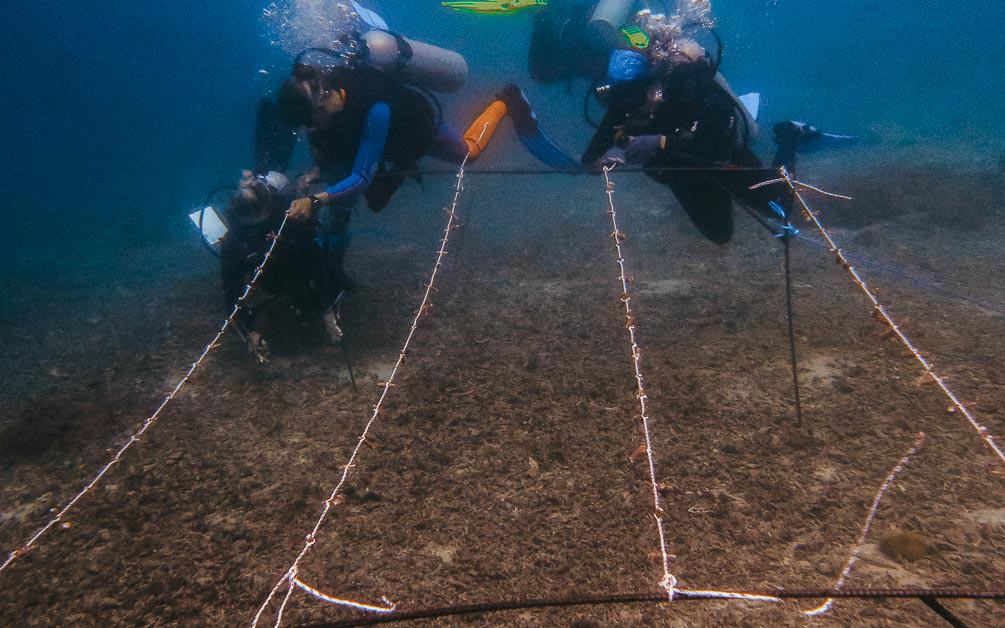
Transplanting corals in the ocean can be tricky. For one, corals raised in a nursery are grown under ideal conditions where they are sheltered from disturbances like storms, boating accidents, and pollution. As a result, not every planted coral survives. To provide corals with the best chance of survival, farmers and researchers must determine the best location to place their corals. Ideal locations should mimic the species’ native habitat, be low in algal growth, and be protected from storm damage. Once a suitable spot has been chosen the newly grown coral heads are relocated. Coral-planting divers have an responsibility to find a stable, spacious home for the newly transplanted coral. To fully understand the process of regrowing coral reefs, many organizations monitor the health and growth of their corals after they have been planted. As you may imagine, this entire process can require extensive amounts of money, time, and human resources, and there are ways that we can all help in this process…stay tuned!
Success Stories
Due to overfishing, poor water quality, high water temperatures, and loss of biodiversity, the Atlantic coral has experienced a sharp decline since the 1970s. Stoney corals, in particular, are being threatened, and in some areas of Florida and the Caribbean, coral cover has declined by 50-80% in the last three decades. To combat this loss and replenish coral habitats in the Atlantic many organizations have implemented creative new ways of practicing coral farming.
Pioneering the coral restoration business Coral Vita operates the first commercial land-based coral farm in Grand Bahama. While many small research facilities and conservation groups take part in coral farming, Coral Vita is the first to market and sell reef rehabilitation programs to hotels, governments, and other organizations that depend on healthy coral reefs. They also serves as an educational institution, coordinating community outreach programs, and offering tours of their facility.
The overarching goal is to create corals and corals reefs that are resilient enough to survive our rapidly changing climate. To achieve this goal, Coral Vita developed a novel coral micro fragmentation technique which accelerates coral growth up to 50x and allows coral reefs to develop over months instead of decades. With increased growth, coral populations are quickly able to reproduce and adapt to environmental changes. To prepare corals for climate change, they grows coral under higher temperatures and increased acidity, a process dubbed “assisted evolution”. Coral Vita can also tailor its farmed species for specific habitats or conditions, producing a more diverse and resilient coral than any other reef rehabilitation project. Although still developing, Coral Vita aims to restore and protect coral reefs worldwide through a global network of high-tech, land-based coral farms.
Another success story based out of Key Largo Florida is The Coral Restoration Foundation (CFR) which has also been instrumental in the coral restoration of the Atlantic. CFR was founded in 2007 in response to coral loss along the Florida Reef Tract, the world’s third-largest barrier reef. Unlike Coral Vita, CFR raises coral offshore in in-situ nurseries, growing corals in experimental structures anchored to calm, shallow parts of the seafloor. Recently trademarked, CFR’s Coral Trees™ allow fragments to grow from fingernail-sized branches to colonies large enough to plant within six to nine months. In their persistent effort to restore the genetic diversity of wild coral populations, CRF has become the world’s largest coral reef restoration organization, planting 66,000 corals to date. In collaboration with researchers and organizations worldwide, The Coral Restoration Foundation continues to drive research-based and data-driven coral reef rehabilitation.
Along the world’s largest reef, the Great Barrier Reef (GBR), coral restoration projects have only recently gained traction. To preserve the ecological integrity of the reef, Australian authorities long resisted intervening with natural coral cover. Yet, consecutive bleaching events in 2016 and 2017 left the GBR immensely degraded and vulnerable, destroying close to one-third of the reefs coral cover. To combat this wipeout – cultivated corals were first planted in the summer of 2018 by the Future Reefs Program from the University of Technology Sydney (UTS). For their grow-out method, researchers at UTS collected fragments of coral that withstood the bleaching, then raised them in the calm, shallow conditions of a nearby lagoon. The newly planted corals were grown on an innovative clip that allowed for smooth transplantation into the wild. As GBR rehabilitation gains popularity, organizations like the GBR Coral Restoration and James Cook University are working to develop the best practices for moving forward.
What Can I do?
There are several ways you can get involved to help save our reefs! One of the easiest ways to protect coral reefs is to protect the environment as a whole. Sustainability starts with you. Consider your own actions and the potential ecological impact thereof. Only use what you need, reduce your use of fossil fuel based prodcuts, reuse or repurpose whenever possible, and set a good example for others. Furthermore, keep in mind that marine conservation begins in the home. All drains and waterways eventually lead to the sea and anything we can do to preserve water quality will help our sensitive coral reefs. Therefore, one should avoid dumping toxins, pharmaceuticals, or microplastics down the drain and be careful not to litter as waste on land is often blown into waterways. Volunteering in a local clean-up would be another excellent way to help protect our oceans. We all have a role to play in reducing human-based threats, from climate change to plastic pollution.
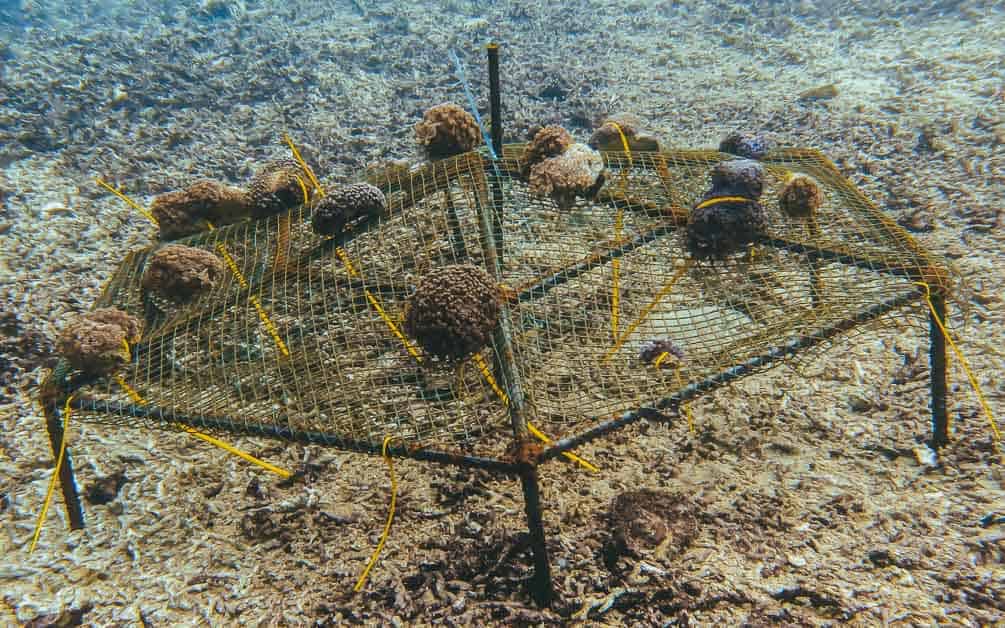
To specifically help with coral reef rehabilitation, begin by researching various restoration groups to see what they offer. Growing coral reefs requires people power, and groups like The Coral Restoration Foundation (CFR) and The Reef Restoration Foundation are always looking for volunteer divers to help plant and monitor their reefs. Non-divers can also help with educational outreach programs and grow out procedures. Thankfully, organizations are always developing new and creative ways for people to help. CFR recently launched their OkCorals program which allows concerned citizens to document reef health using their smartphones. If you’re still not sure how to help – remember that organizations are always happy to take donations and most offer an “adapt a coral” type program, including The Coral Gardeners, Coral Guardians, The Great Barrier Reef Foundation, and The Nature Conservancy.
To learn more about coral restoration, The Reef Resilience Network offers numerous online courses in coral restoration ranging anywhere from coral reef resilience to strategic communication. Furthermore, divers can enroll in a PADI Coral Reef Conservation Specialty Course and although they don’t specialize in reef rehabilitation, groups like Reef Check and R.E.E.F train divers to monitor and assess reef health.
CORAL FARMING
FAQs
1. Is it Illegal to Collect Coral?
The simple answer is yes. Worldwide, many types of coral are protected by The Convention on International Trade in Endangered Species (CITES). CITES prohibits the removal of “precious coral” species commonly used to make valuable jewelry or souvenirs. Precious corals live extended periods and make up much of the reef habitat, however; they grow very slowly and can take decades to recover. Along with living corals, CITES also prohibits the removal of coral fragments or dead corals since dead corals play a significant role as substrate or habitat for other animals and can also break down to create beach sand. To protect the health of wild populations, CITES restricts harvesting or captive breeding of corals.
Many countries, states, and municipalities also have their own laws regulating the removal of marine life. For questions about a particular region or species, contact your local natural resources management office.
2. How does coral grow?
Corals can reproduce sexually or asexually, meaning they do not always need a partner to produce offspring. Through asexual reproduction, one coral polyp can split into two, allowing for a fast and easy population increase. Corals may also release sperm and egg cells, which combine in the water to produce genetically unique offspring. After fertilization, coral larvae float around as plankton until finding a suitable spot for attachment and growth.
As new individuals form, either through sexual or asexual reproduction, they remove calcium and carbonate from the surrounding seawater. This compound is slowly secreted from the coral’s tissues to build their protective rigid skeletons. Over thousands of years, colonies grow to produce the massive reef systems we are familiar with today.
3. How long does it take for corals to grow?
Different species grow at different rates, but on average, reef-building corals grow about 1 centimeter a year or the speed at which your fingernails grow. For stony corals, the growth rate can range from 0.3 cm to 10 cm per year. Corals grow very slowly compared to other organisms and large reefs like Australia’s Great Barrier Reef (GBR) or the Florida Reef Tract can take millions of years to grow. It is coral’s slow growth that makes conservation and restoration such a monumental challenge.
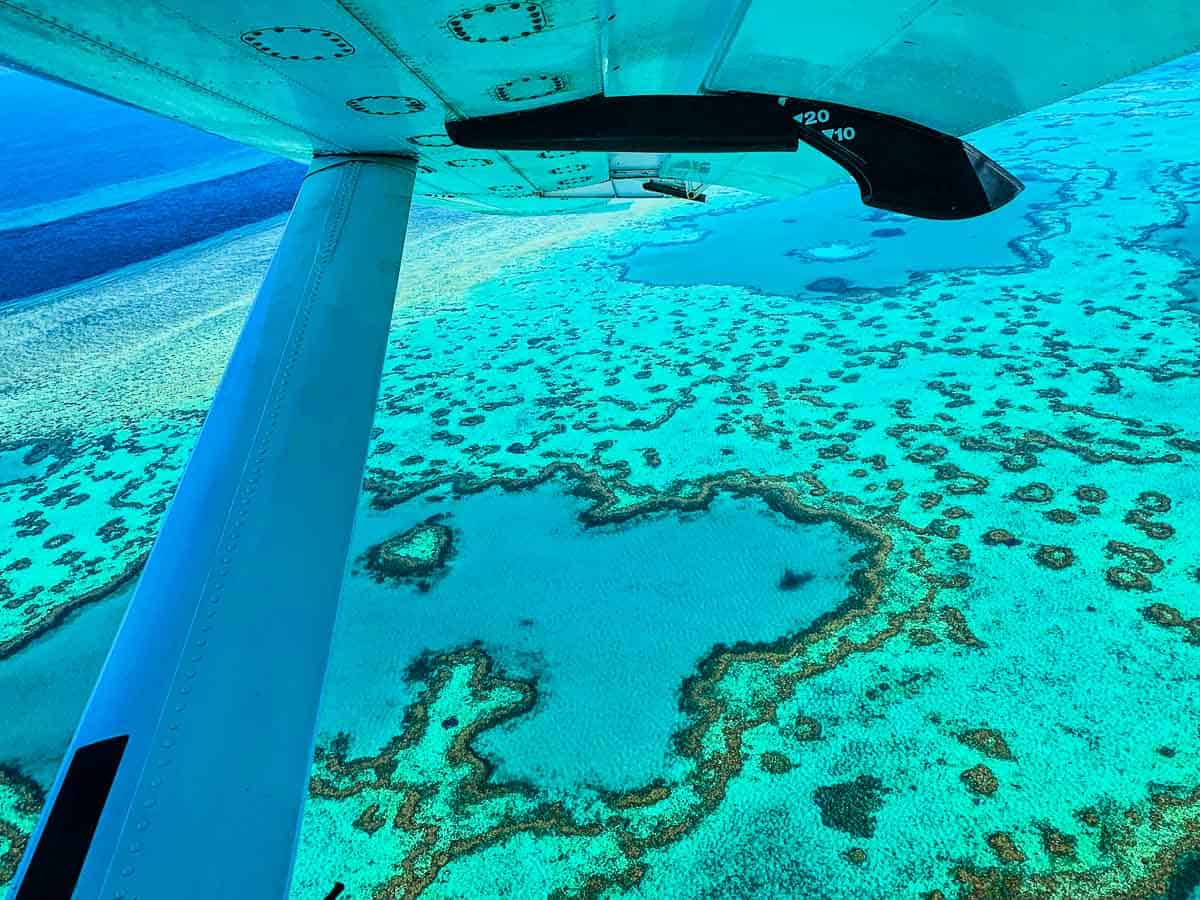
4. What is coral farming?
Coral farming is the growth and reproduction of corals under controlled environments. It enhances the natural growth process of living corals, using coral’s ability to asexually reproduce or clone itself. Micro fragmentation is the splitting up of a large coral colony into several, much smaller coral colonies. This process can accelerate growth up to 50x than what is ordinarily observed in nature. Corals are farmed for various reasons, typically for profit or to transplant to wild reefs. Farming corals for reef rehabilitation is a viable solution to the loss of coral reefs observed worldwide.
5. Can I grow corals at home?
Yes! In fact, it’s something that I highly recommend! Coral fragging can be a fun and even lucrative hobby. If you want to grow your own corals at home, I recommend beginning with soft corals. They’re hardier, cheaper, and their fast growth rate makes them far more forgiving. You will need a sterile razor blade, some super glue, and aquarium plugs…
With a steady hand, gently slice the coral tissue at the base, separating neighboring polyps. Each frag should contain at least 3-4 polyps and for your first time, maybe start with two or three frags to see how they do. Once you become comfortable with soft corals, you can graduate to hard corals. Numerous channels on YouTube, such as Aarons Aquarium, and Exotic Aquatics also offer tutorials on growing corals at home.
Successful at-home farmers often sell their corals or partake in “coral swaps” or “frag swaps” facilitated by communities like Reef2Reef and Reef Central. Frag swaps are a great way to build your aquarium’s diversity while geeking-out with fellow coral enthusiasts.
FINAL THOUGHTS
Protecting the marine environment is critical to life on Earth. The oceans regulate global climate, provide protein and livelihoods to nearly half the world’s population, and house thousands of species, some of which produce over half of the oxygen that we all need to breathe. Coral reefs are vital to ocean health – providing habitat to nearly a quarter of all marine life and sheltering the coast from large, damaging storms. As these important ecosystems disappear, growing coral reefs and protecting our existing reefs becomes everyone’s responsibility. Regardless of your age, skillset, or proximity to the coast, everybody has the incredible potential to make a difference so find some way to get involved and encourage others to do the same.
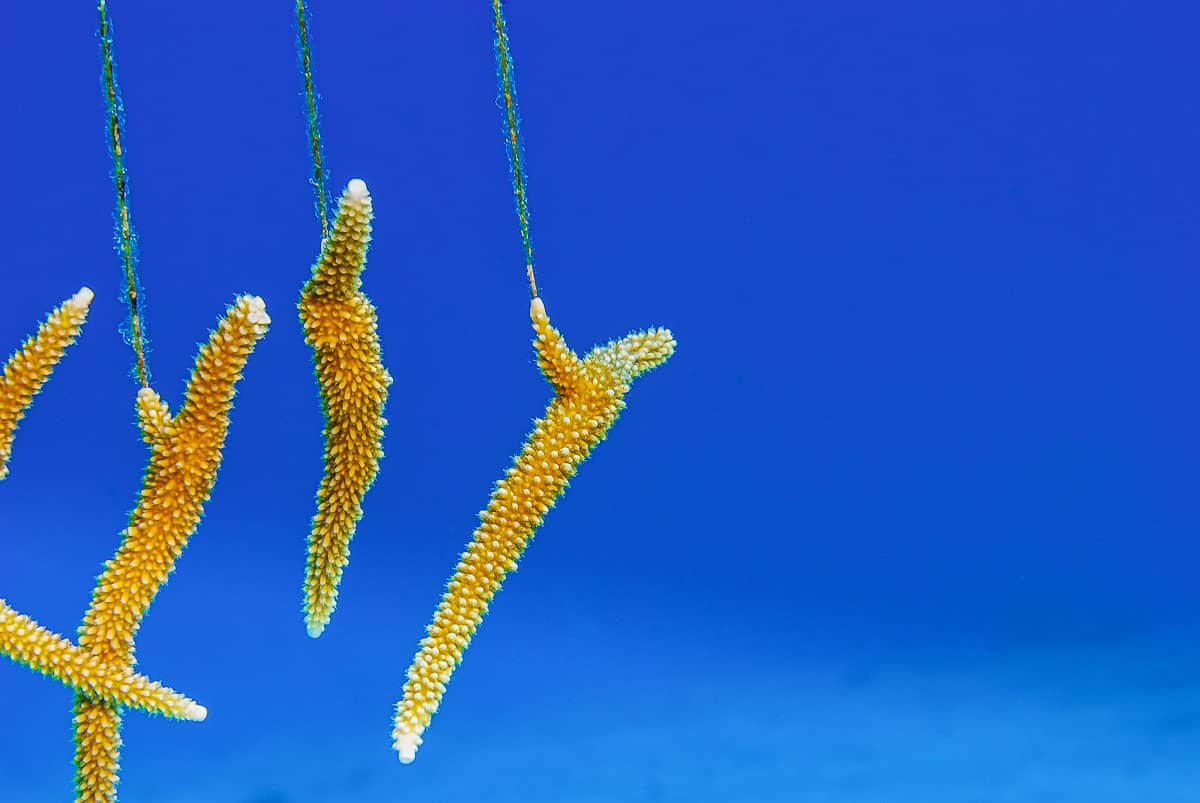
SOURCES
Coral Farming
- Corals Tutorial: NOAA’s National Ocean Service Education, oceanservice.noaa.gov
- Can Coral Farms Save Our Reefs?, cnn.com
- A Lifesaving Transplant For Coral Reefs, nytimes.com
- Can New Science Save Dying Coral Reefs?, nationalgeographic.com
REACH OUT
We always speak about ‘They’. They need to do something about the plastic problem. They need to stop overfishing. What They are doing to our oceans is simply unacceptable. But who are They?
The government? The government is an administrative body elected by the people. The government exists only to serve out the needs of those people. They is in fact our society, a collection of individuals. You are one of those individuals, and so am I. There is no They, there is only We, and We are all part of the problem. However, We can choose to be part of the solution instead. Sure, sometimes it feels like one individual has such a small chance of creating meaningful change – so why bother. But remember, if everyone had that mindset, there is 100% chance that nothing will change.
We only have one Earth. We can make a difference.
You have a Part to Play – join us in our fight against the Ecological Disaster of our Age.


